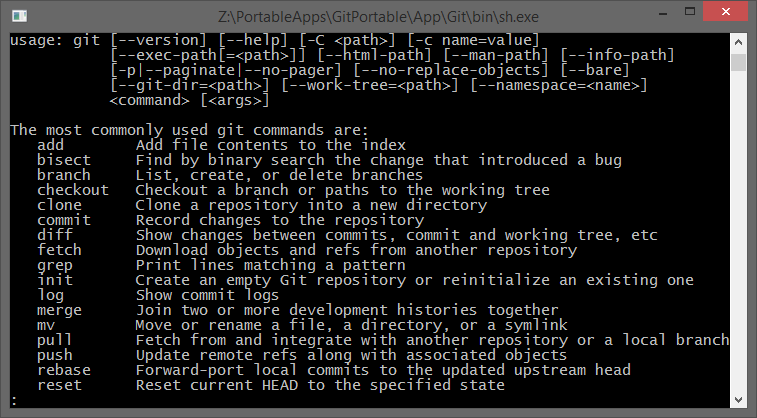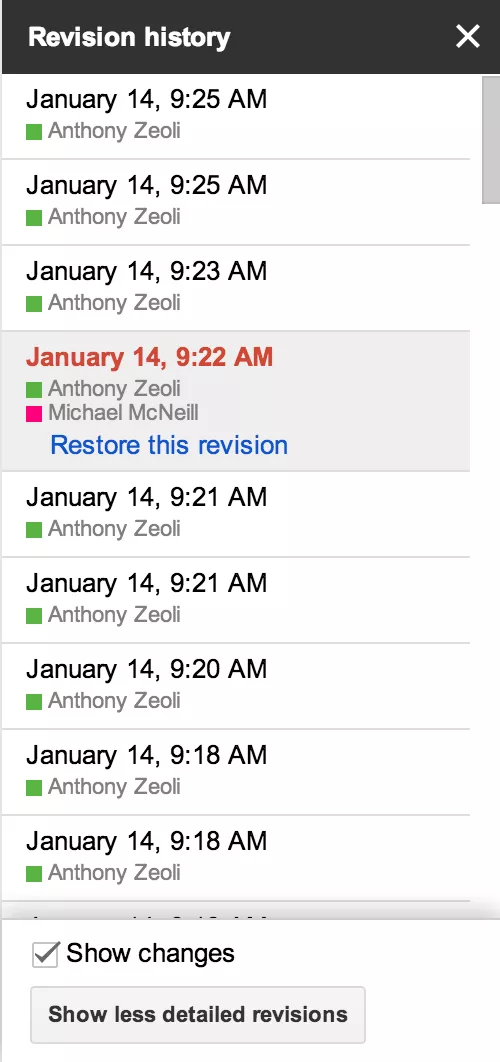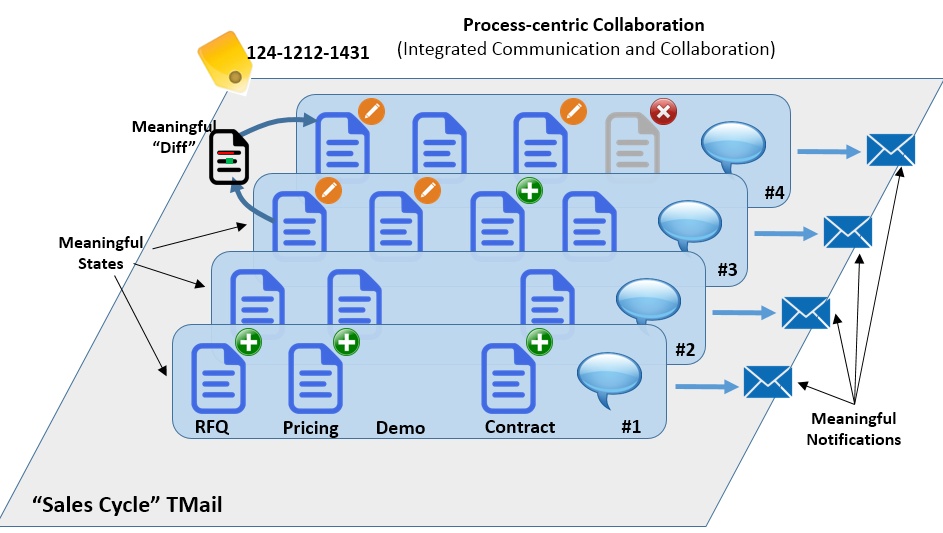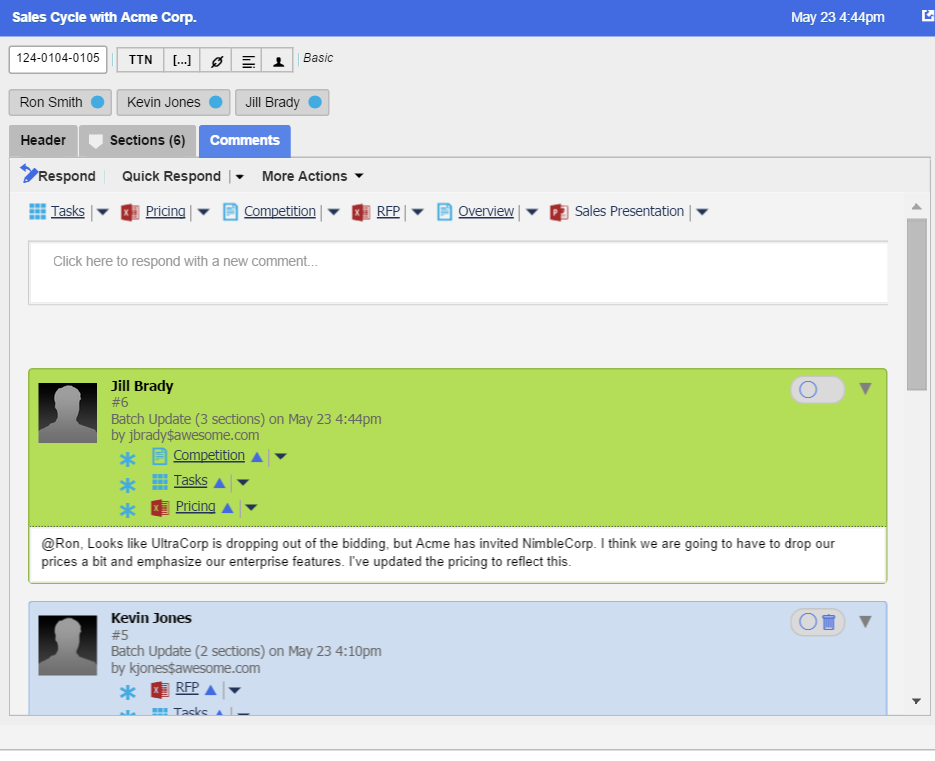How Businesses are Missing Out on One of the Most Powerful Collaboration Techniques
The primary way that businesses collaborate on processes (other than specialized applications) is via a mix of EMail/Chat + document-oriented-collaboration . An example of a modern document-oriented collaboration system is Google Docs. But do businesses realize that there is a better way? It turns out there is a much more powerful collaboration technique available and it has been sitting right underneath our noses all this time.

It is a technique used by software developers on a daily basis and goes by the techie name of Source Code Management .
So what is Source Code Management and why is this technique so cool?
Developers create apps and programs by creating and modifying a set of (source code) files. This set of files is collectively called the codebase. The most important characteristic of source code management systems is that they enable the evolution of the codebase from one meaningful state to another. This turns out to be a critical requirement as programs won’t run if the codebase is not in a meaningful state. The figure below shows the evolution of a codebase.
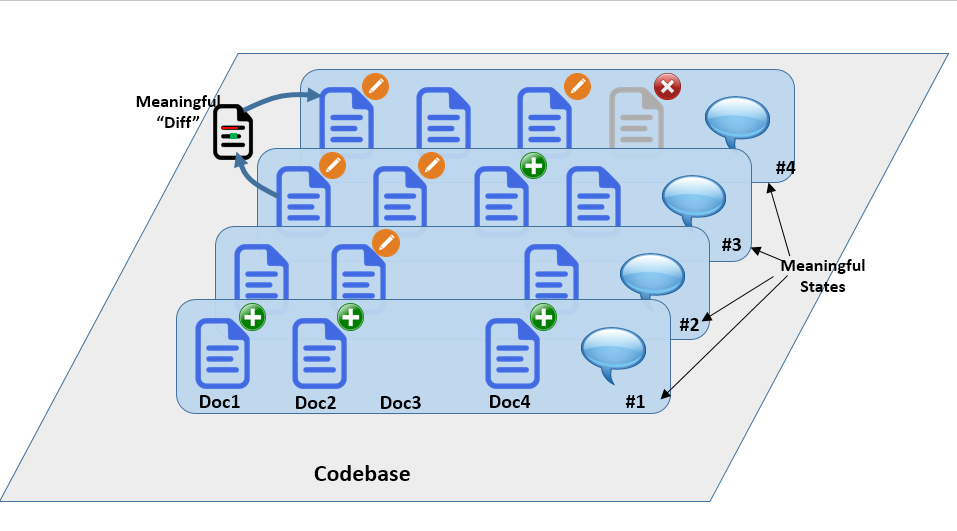
In order to achieve this goal and facilitate collaboration, software developers invented the modern Source Code Management system. The modern source code management system has the following characteristics:
1) Multiple software developers can simultaneously modify the codebase.
2) The codebase (as a whole) moves from one meaningful state to another.
3) The system shows the difference between meaningful states. Because the states are meaningful the differences are also meaningful .
4) The sequential set of meaningful differences is crucial to allowing developers to understand how the system reached a state from a state they previously understood .
5) Developers control the scope and granularity of the changes.
6) Developers are unafraid to make changes as the entire history is kept and they can always go back to an earlier meaningful state.
7) Developers add comments that describe the change from one meaningful state to another.
This turns out to be an incredibly powerful collaboration technique that has been used to produce some of the most sophisticated collaboratively-built products (software programs) known to mankind.
So, why can’t business users use this technique which has been sitting right under their noses all these years?
These systems were originally geared towards plain text files rather than content more applicable to modern business users. But source code management has also been hidden under layers of developer-oriented jargon and cryptic interfaces.
The screenshot above shows the most commonly used commands of one of the most powerful and popular Source Code Management systems in use today; a system called ‘Git’
Business Processes have two main requirements similar to Codebases: Both need to move from one meaningful state to another, and both need to showcase meaningful differences between document versions.
Let’s consider a real business scenario, viz. A group of employees, say from Sales, Marketing, Legal, Consulting and Engineering collaborating on a sales cycle. There may be several documents that need to be collaborated on in the sales cycle including RFQ’s, Pricing Proposals, Competitor Analysis, Sales Presentation, Contract Proposal, Demo etc. etc.
In the document-centric model as shown below, each document is collaborated upon individually. And there may be an email thread or chat about the whole Sales Cycle.
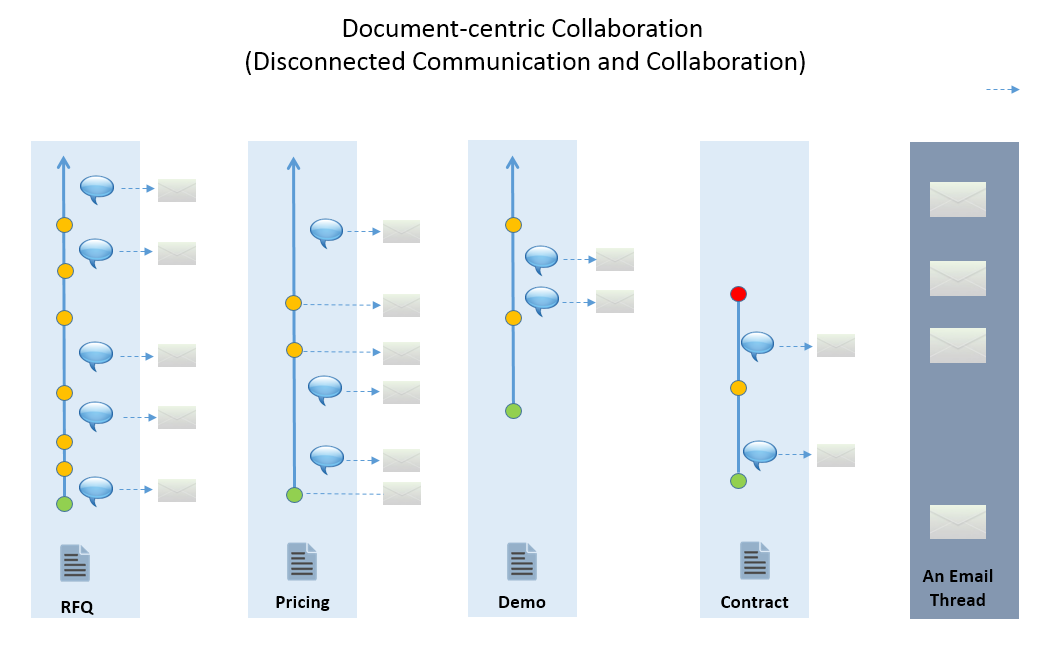
Several challenges exist when using these systems.
First, even within a single document, there is no progression from one meaningful state to another. Modern document-oriented collaboration systems such as Google Docs use a technique called Operational Transform to allow simultaneous collaboration. While this technique allows for simultaneous editing, it can also result in documents left in non-meaningful states. In fact, the greater the number of simultaneous edits, the greater the risk of the document being left in a non-meaningful state. This can be catastrophic for mission-critical processes.
Second, in order to reduce these types of problems these systems are designed to ‘merge’ inputs from different users as fast as possible. Because of the high volume of ‘tiny change’s to the document, audit trails become relatively useless under high concurrency. A meaningful audit trail is absolutely critical in collaborative systems.
These tiny changes also produce high volumes of notifications, essentially rendering meaningful notifications useless.
“In Collaboration the Journey is as important as the Destination.”

Finally, all of these single-document collaboration problems are multiplied manifold in a multi-document process. Often an email thread or a chat is used to coordinate the whole multi-document process. But the email thread itself is out of synch with some or all of the documents. This leads to further confusion and potential for catastrophic errors.
In the end, you get a highly disconnected, error-riddled collaboration and communication process.
TMail21 is designed with a process-centric approach rather than a document centric approach. It has been partly inspired by the power and success of the source code management collaboration approach.
The figure above shows how a single TMail proceeds through a series of meaningful states. You can see the similarities with a source code management system
However, TMail differs from source code management systems in the following ways:
1) TMail is geared towards regular business users and has a user interface metaphor very close to email.
2) TMail supports heterogeneous content types including Rich Text, Grid, Form, File etc.

3) TMail is designed explicitly as an integrated collaboration and communication system.
Just like source code management systems, individual TMails proceed from one meaningful state to another, while also supporting meaningful diffs between these states. Users also control the scope and granularity of any changes made, with comments perfectly synchronizing within the content base. This also results in meaningful notifications.
The screenshot below shows changeset #6 made to a TMail by Jill Brady. In this changeset, the Competition, Tasks and Pricing content Sections were modified in a single meaningful update. Additionally, there is an associated comment from Jill. This changeset also results in notifications to Ron, Kevin and Jill.
Teams can and will adopt newer, more streamlined ways to collaborate. With TMail21, businesses can run mission critical and sophisticated business processes with an interface that’s as simple as email. We’re tackling the communication barriers that hinder business productivity through an easily adoptable, user-friendly platform- One TMail at a time.
You can get started with TMail21 for free by clicking here.


